Rome, the Eternal City. You have always heard so much about it and have long longed to see it with your eyes. Despite this, I’m sure that now that you are here as you have no idea where to start your exploration. So, here’s a short list of the 15 things to do and visit in Rome: if you don’t see them, you must definitely come back!
Table of Contents
But first of all…a bit of history.
According to history and legends, the fight between two brothers, Romulus and Remus gave birth to the city Rome, on 21st April 753 BC. The two twins were the descendants of Aeneas, a Greek warrior. After escaping from the Trojan war he arrived in today’s central Italy. The brothers were abandoned at birth in the area where the today the Forum stands. They were then nurtured by a she wolf, before a family of farmers found them and brought them up.
Once they became adults, they decided to found a new city. Romulus wanted it to be on the Palatine hill and to call it Rome, while Remus chose the Aventine Hill and Remora as the name of the city. After a violent fight, Romulus killed his brother Remus and founded Rome, the Eternal City. As time passed, the city expanded in the surrounding areas of the Palatine Hill. This is why it is said that Rome was built on 7 hills, on top of which today you can find some of the main monuments of the Italian Capital.
The Colosseum and the Forum Romanum
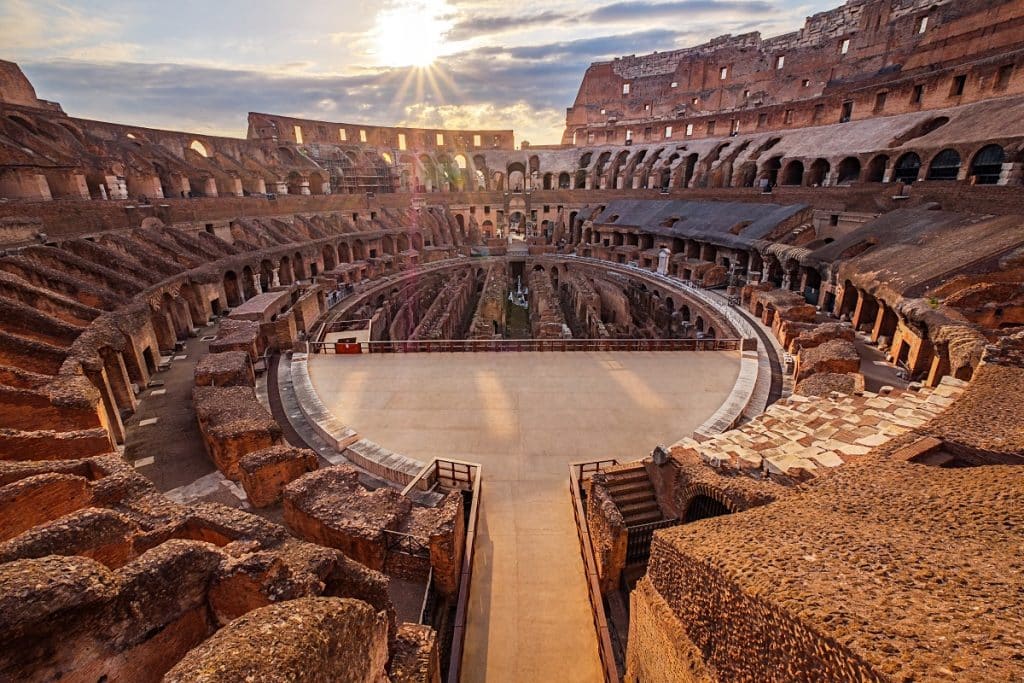
Let’s start from the basics. Maybe you are a huge fan of the movie “The Gladiator” and you can’t wait to enter the Anfiteather, but even if that’s not the case, visiting the Coliseum is a unique experience. The building is also known as Flavian Amphitheatre, from the emperor Vespasian of the Flavian family. It was built in just 8 years and inaugurated in 80 B.C..
The name “Colosseum” comes from a huge bronze statue (a colossus) of the emperor Nero, that was built right next to the Coliseum. It was in fact used as a decoration for the entrance of his Domus Aurea, the magnificent imperial villa where he used to live (see below).
The monument was mainly used for gladiators fights, renactments of famous battles and hunting shows. In 1980 it was also declared a UNESCO World Heritage Site , together with Rome’s historic centre and many other areas and monuments of the city. Given the long-lasting power of the Roman Empire, that spread across multiples territories, Rome has been called the Eternal City. According to a prophecy of the VIII century, in fact:
“While the Coliseum stands, Rome shall stand; when the Coliseum falls, Rome shall fall; when Rome falls, the world shall fall.”
We all hope it will stay there forever, but just in case…you better hurry up and visit it! 😉
The Forum Romanum

Admission to the Coliseum is permitted with guided tours only, that are also the best way to learn about its history and to fully enjoy this wonderful masterpiece. Moreover, the ticket includes not only the Coliseum but also the Palatine Hill and the Roman Forum, all in the same area.
The latter was the centre of the city life, where processions, elections, trials and gladiators fights took place. Here, Romans built the most important buildings for the political and religious life, but during the centuries some of them got destroyed or incorporated in other buildings.
This happened especially during the Middle Ages, when the whole area was used as a field for cattle. Nowadays, though, many ruins can still be admired, allowing you to imagine what would have felt like to walk in those streets in the Ancient Rome.
So, start preparing yourself for a trip in the past…and at my signal, unleash hell! 😉
The Pantheon

Another important thing to do in Rome is viting the Pantheon. The name comes from Ancient Greek, meaning “All Gods”. It was was founded in 27 B.C and probably used to host many statues of the gods worshipped by the Romans. After the breakdown of the Roman Empire, though, it was abandoned for many years.
It then became a basilica and during the centuries, when it was managed by the Church, it suffered some modifications. For example the removal of the bronze that covered the beams of the front porch, which they used to build the columns of St Peter’s Baldachin. In 1861, year of the Unity of Italy, the Pantheon became the place where to bury all the main Italian kings.
What’s to peculiar about the Pantheon is it huge dome with a diameter of 43.3 meter, equal to the height from the floor. The 9-meter whole on the top of the dome lets the light come in but also the rain. Thanks to the architectural tricks used, thiugh, the water flows out without creating puddles.
The entrance to the Pantheon is free and it is really worth a visit. Take a look at the incredible internal architecture, the tombs of the kings and many frescos, paintings and statues.
Trevi Fountain
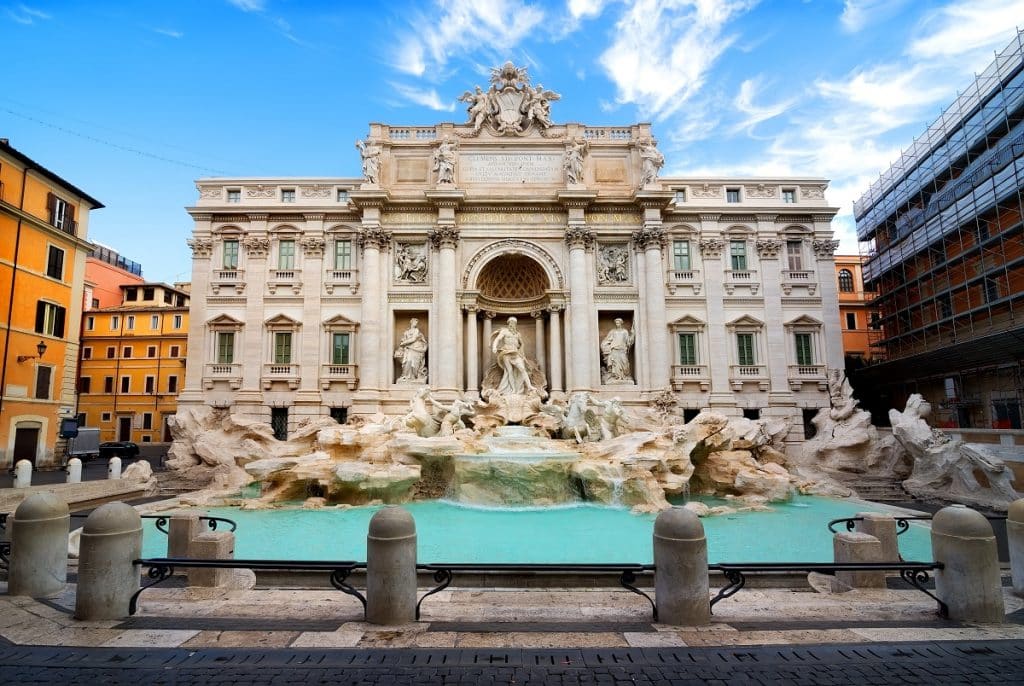
If you wish to go back to Rome on day, then prepare yourself to throw a coin in one of the most spectacular fountains of the world. The Trevi Fountain, founded in 19 B.C., is called like this for two possible reasons. Probably because of the 3 sprinkles of water or because it is located at the crossroad of 3 streets.
It is a unique example of an aqueduct that is still functioning since the era of Augustus, during the time of ancient Rome. Its current look, a mix of Classicism and Baroque, is due to the restorations and modifications that the Church did during the 1700s. The fountain has been used as the set of many movies, among which the famous “La Dolce Vita” where the female protagonist, Anita Ekberg, enters the fountain.
Wishing to take a bath in the fountain?
Well, although during a hot summer day the idea of entering the fountain may be appealing, it is strictly prohibited. What you can do is to sit down, giving your back to the fountain, close your eyes and throw a coin. In this way you’ll be able to come back to Rome in the future.
Given the high amount of coins thrown in the water, the City Hall decided that the whole amount has to be collected. They then give it to the Caritas, a catholic association dedicated to help people in need. With no surprise, though, there have been many cases of private people collecting the coins in order to keep them.
Navona Square
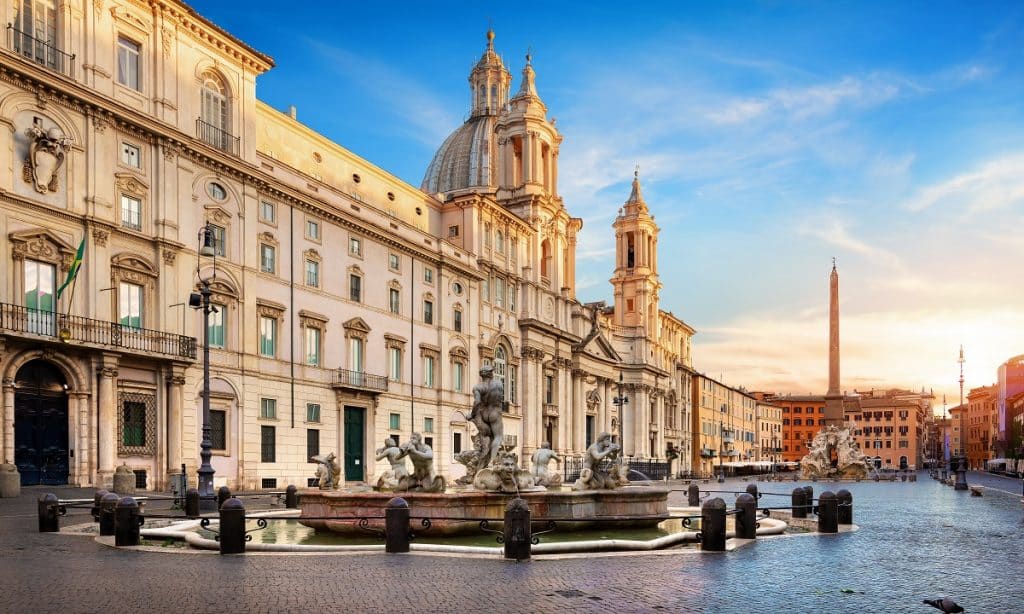
The Roman Emperor Domitian built it in 86 A.D. as a “stadium” to host horse races and athletics competitions. Now, instead, you can find the Saint Agnes Church and 3 beautiful fountains: the Neptune, the Four Rivers and the Moro’s Fountain.
The square is always full of people, both Romans and tourists. All of them just enjoy taking an aperitivo in one of the bars, or simply meeting there to hang out and chat. Until the mid 1800s, a fun event that took place and that everyone enjoyed was the so called “lake”. The only draining point of the Four Rivers fountain was closed so that the whole square was flooded, giving people the opportunity to fresh themselves.
Campo dei Fiori
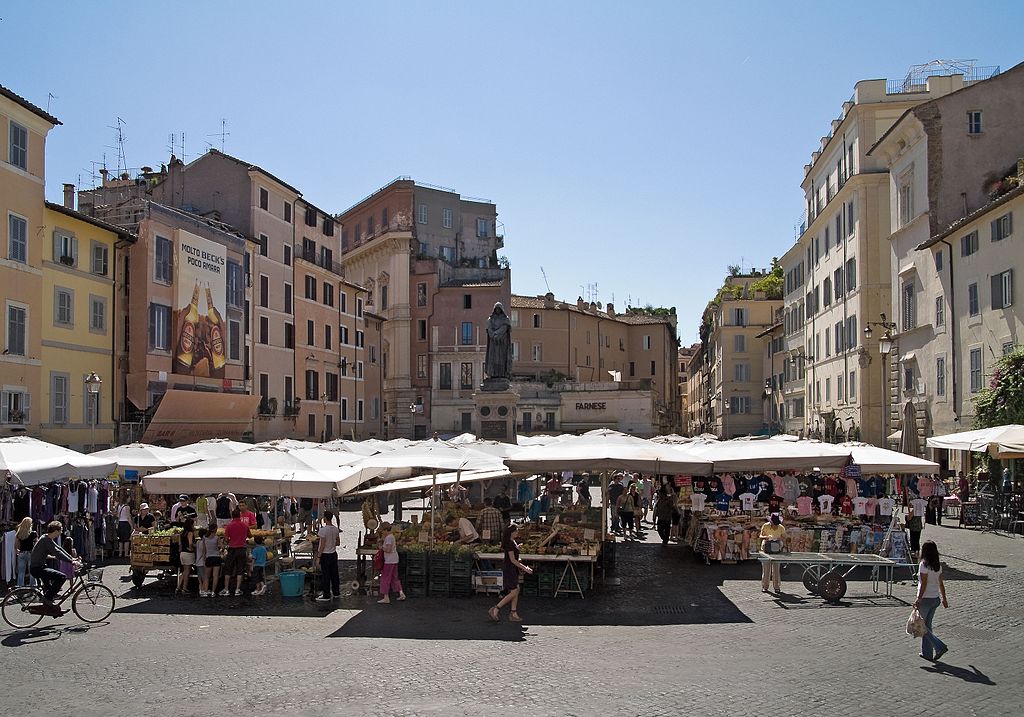
This picturesque square is the only one in Rome without a church (yes, it sounds incredible right?!). Its name dates back to 1400 when there was no square at all but just a big field (campo) with flowers (fiori). Nowadays you can find a lively market, besides many bars and cafés where young people meet at night.
Il Campidoglio

Also known as Capitolin Hill, it is one of the seven hills on which Rome was built. Here you can now find Rome’s townhall (Palazzo Senatorio). On the right of the palace, you can enjoy a very good view on the Roman Forum and also see, on top of a column the symbol of the city, the statue of the she wolf feeding Romulus and Remus.
Domus Aurea

The “Golden House”, due to the abundant quantity of gold used, was the house that the Roman emperor Nero built after the fire that destroyed Rome in 64 A.D.. After the fire, in fact, a vast area was expropriated and used to build Nero’s home, which was probably never completed. It then got destroyed after the emperor’s death.
On top of it, Romans decided to build the Baths of Trajan, which at the time constituted the largest baths in the world. Built on the area where you can nowadays find the Roman Forum and the Coliseum, the house extended for 219 hectares. It hosted multiple woods, gardens and even an artificial lake that after Nero’s death was dried. On top of it they built the Coliseum, fountains and multiple rooms.
Today, restoration and renovations works are trying to preserve the house. When I visited it in 2016, we had a really interesting guided tour inside the house (which is underground), being able to clearly see all the rooms and mosaics. Nowadays, the tours are probably closed but you can see the Domus Aurea thanks to Virtual Reality.
St Peter’s Church
Maybe you are one of those tourists who come to Rome mainly because you want to visit the Holy See. Well, one of the most important sites for the Christian religion is undoubtedly the Vatican. This isn’t kjust the place where the Pope resides but also the place to visit the spectacular St Peter’s basilica.
At the beginning of the XVI century, Pope Julius II commissioned Donato Bramante the building of the Basilica. Here, in 324 A.D., the Roman emperor Constantine built a sanctuary to bury Jesus’s first apostle, Peter. The basilica took more than 100 years to be completed, from 1506 to 1626, and it is still today the largest church in the world.
The majestic dome was created by Michelangelo, who also painted the Sistine Chapel and created the Pietà sculpture, visible inside the church. The wide square, instead, was realized by Bernini, who also built the imposing baldachin near the altar. Entering the basilica is a unique experience, that makes you really perceive and breathe the Catholic atmosphere (even if you are
not religious). Moreover, it’s a wonderful opportunity to see the magnificent architecture and masterpieces.
How to best explore the Vatican ?
You can choose to freely walk around the church on your own, rent an audio guide or take a guided tour. Some of them also combine the Vatican Museums, the Bramante staircase and other highlights.
If you wish to see the Pope, you can attend the Mass celebrated each Sunday morning. Alternatively, just be in the square by 12pm to see the Pope during the “Angelus” part of the Mass, appearing from one of the Vatican’s windows. Beware that the square is always very crowded and that there are security checks, so make sure you arrive in advance.
The Sistine Chapel
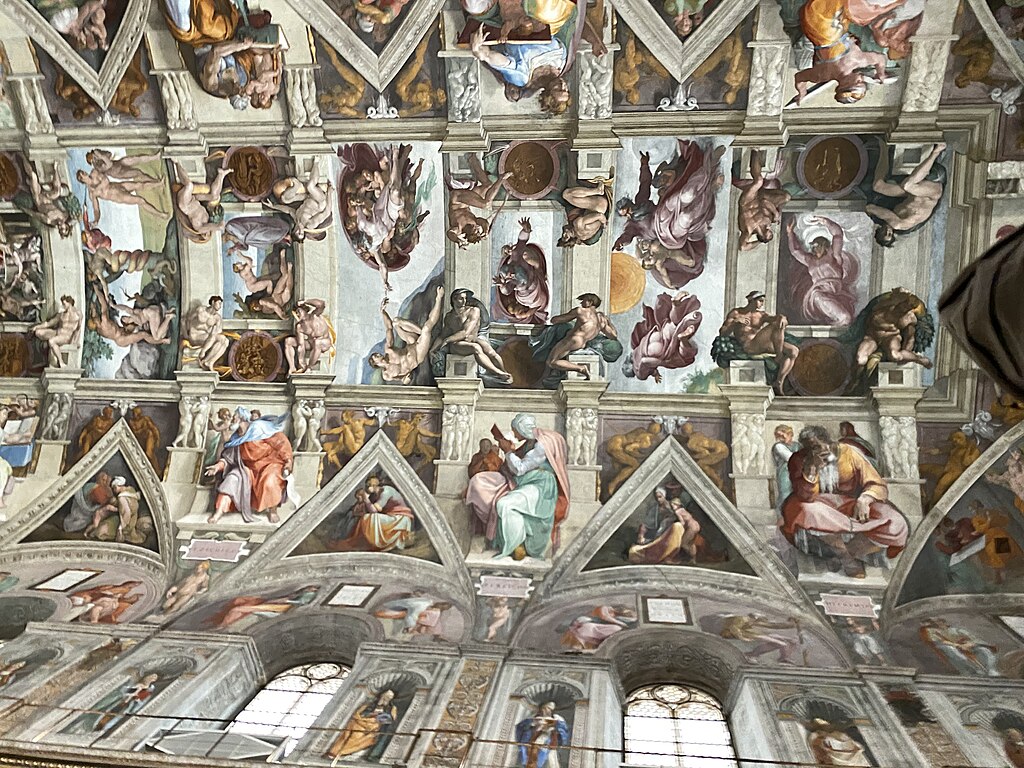
Once you are in the Vatican, besides visiting the basilica and taking pictures of the square and of the Swiss Guards, you really cannot miss the Sistine Chapel by Michelangelo. Inside the Vatican Museums you can in fact see frescos, statues, sculptures and paintings dating back to Romans, ancient Greeks, Egyptians. You can also see masterpieces by Raffaello, Leonardo Da Vinci, Caravaggio and more.
The Sistine Chapel, commissioned by Pope Sixtus IV and built at the end of 1500, is of course the main attraction. Here you can admire Michelangelo’s masterpieces, “The Last Judgment” on the frontal wall and “The creation of Adam” on the ceiling.
Please note that you cannot spend much time inside the Sistine Chapel. Moreover, you cannot take pictures. You can choose to visit both the Vatican Museums and the Sistine Chapel on your own (or with an audio guide). What I did, though, and that I recommend you doing is to book for a guided tour where you can get to know many things and truly appreciate what you are visiting.
Michelangelo created a masterpiece and you really need to enjoy it and get the most out of it. Nowhere else in the world you’ll be able to see such a stunning piece of art! 😊
The Catacombs

Ok, we have seen the huge role that the Catholic religion plays in Rome: churches and religious pieces of art everywhere. But it hasn’t always been like thi. As soon as the Christian religious rose, the Ancient Romans started to persecute Christians. People buried their dead in the Catacombs where they also hid in order to keep worshipping God without being killed.
The Catacombs, which are still visible nowadays, are 70 or 30m deep tunnels dug in the tuff, built outside of the city. Here, in spaces called “loculi”, the first Christians buried their families and friends. It is said that the bodies of Peter and Paul had been buried in the Catacombs, where in any case, many martyrs were brought after death.
There are still many Catacombs that can be visited with a guide. No one is in fact allowed to go down on his/her own, given that some of the tunnels are closed and the maze is so big that it’s pretty easy to get lost. One of the largest and well preserved Catacombs are the St. Callixtus Catacombs, where you can book a guided tour in different languages. Learn about the history of this fascinating place, take a look at the skulls of the first martyrs and put yourself in the shoes of those first Christians. 🙂
Spanish steps
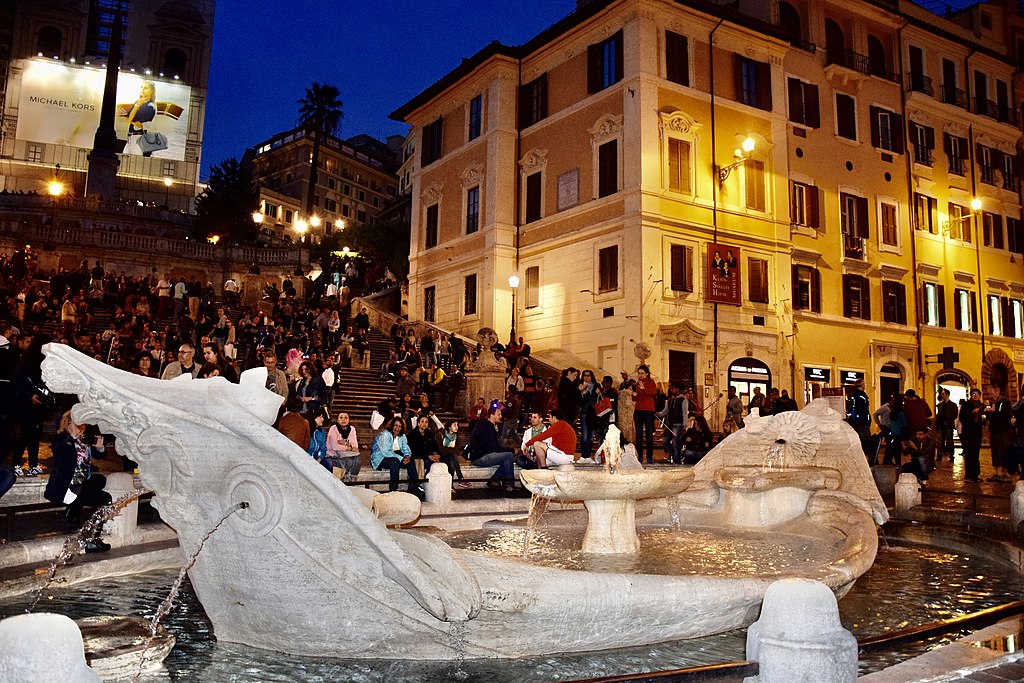
You thought the list of things to do in Rome was over, right? Well, not yet! This really nice square, Piazza di Spagna, is one of the most famous highlights in Rome. You might be wondering what Spain has to do with it, since we are in Italy… Well, the name comes from Palazzo di Spagna, seat of the Embassy of Spain among the Holy See. The square offers multiple monuments and noteworthy highlights.
First of all, of course, the Spanish steps (136 to be precise), that were built at the beginning of 1700 to connect the Spanish embassy to the Trinità dei Monti church. Then you have the Fontana della Barcaccia, a baroque fountain built by Bernini and the house where the English poet John Keats lived and that is now a museum dedicated to him.
Moreover, you can admire the Column of the Immaculate Conception of the Blessed Virgin Mary. This was inaugurated on 8th December 1857 to celebrate king Ferdinand II, who survived a killing attempt. From 1923, every 8th December, Feast of the Immaculate Conception, firemen put a crown of flowers on the top of the statue. Often the Pope too attends the whole ceremony.
Villa Borghese

After all this art and culture you probably wish you could relax in the nature, in a quiet and peaceful green area, right? Well, then the park of Villa Borghese is the right spot for you! And guess what? It’s just 10 minutes on foot from the Spanish steps!
It is one of the main parks of the city and it was first built in 1605 for the cardinal Scipione Borghese. The park has been modified multiple times during the centuries and since the beginning of 1900 it is owned by the State. Nowadays, it is the perfect place where to go for a walk, rent a bike or a rickshaw to explore the 6km wide park with its statues, fountains and artificial lake.
The entry to the park is free, while a ticket is required to access the villa that hosts a Gallery. here you can find masterpieces of famous artists such as Tiziano, Raffaello, Caravaggio and Rubens and a Musuem with sculptures by Bernini e Canova.
Castel Sant’Angelo

By now, you should not be surprised anymore that this monument, like 99% of things in Rome, was first born during the Roman Empire. It was in fact used as Adrian’s mausoleum and therefore called Mole Adriana.
In 590 A.D., though, its name changed into the current Castel Sant’Angelo. Why so? Because after a long pestilence, Pope Gregory I organized a penitencial procession. As soon as the group arrived in front of the mausoleum, the Pope had a vision of Saint Michael the Archangel putting away its sword (of which a statue can now be found on top of the castle). This act defined the end of the pestilence and the name of the building therefore changed to Castel Sant’Angelo (angel).
During the centuries it was used as a castle to defend Rome from invasions. Moreover, the following Popes decided to use it as a refuge and to connect it directly to the Vatican thanks to a secret corridor. Nowadays it is a museum where many pieces of art can be seen, together with the areas that in the past were used as prison.
Vittoriano

Ok, so for the first time here we have a monument that has nothing to do with Ancient Rome or with religion! 😉
The Vittoriano, also incorrectly called Altare della Patria (Altar of the Homeland) was built at the end of 1800 . Its main purpose was to celebrate king Vittorio Emanuele II who defeated the invaders and made the unification of Italy possible, in 1861. The monument hosts the Altare della Patria and a small mausoleum for the Unknown Soldier. All the national celebrations in Rome are usually held here, with parades and the presence of the President of the Republic and the Prime Minister.
Today you can visit the Vittoriano to see the multiple exhibitions hosted. Beside this, I recommend you to go on top of the first staircase and enjoy the magnificence of the building and the view on Venezia Square.
Trastevere and the Gianicolo

Alright, but what about breathing the same atmosphere that Romans breathe? Or how to see the whole city from above? Well, then you need to dedicate some time to two wonderful areas of the city. 🙂
The first one is Trastevere (coming from the Latin trans Tiberim, ‘on the other side of the river’, that in Italian is nowadays called “Tevere”). Here you can just have a relaxing stroll, enjoy the view of small and pictoresque streets and visit the oldest church in Rome, the Basilica of Sant Mary. The chuch is located in the homonym square, that at night gets crowded with young people, Italians and tourists, who go out to have dinner, drink a beer and hang out in the nearby streets.
Close to this area, there’s a hill (yes, I know, Rome seems made up by hills only…and this one isn’t even one of the famous first 7 hills!) called Gianicolo. From the top you can enjoy a spectacular view of Rome.
What’s even nicer is to go there right before midday. Why? Because following a tradition of the beginning of the 1900, every day, at 12pm, a World War I cannon shoots a shot. After this signal ALL the bells of the city start ringing at the same time. Being up there, staring at the vast Eternal City with all the bells ringing their familiar and joyful sound is really a unique experience! 🙂
So…ready to visit Rome? 🙂
These are just the most important things that you really have to see when you are in Rome. If you don’t have time to see everything though, don’t worry.
You can still enjoy Rome and feel its magical atmosphere just by simply walking around the city, getting lost and ending up between an ancient Roman ruin and a Renaissance palace or a Middle Age church. So go out and appreciate the beauty of being in a 3000-years-old-city that influenced so much our world and culture! 🙂
Also learn about other things to do in italy cities in addition to rome.
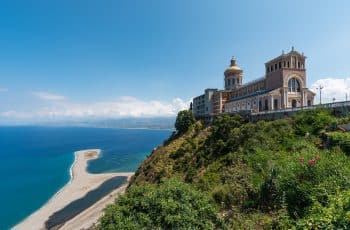

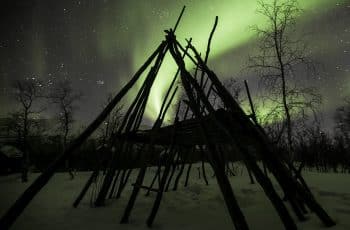

No Responses